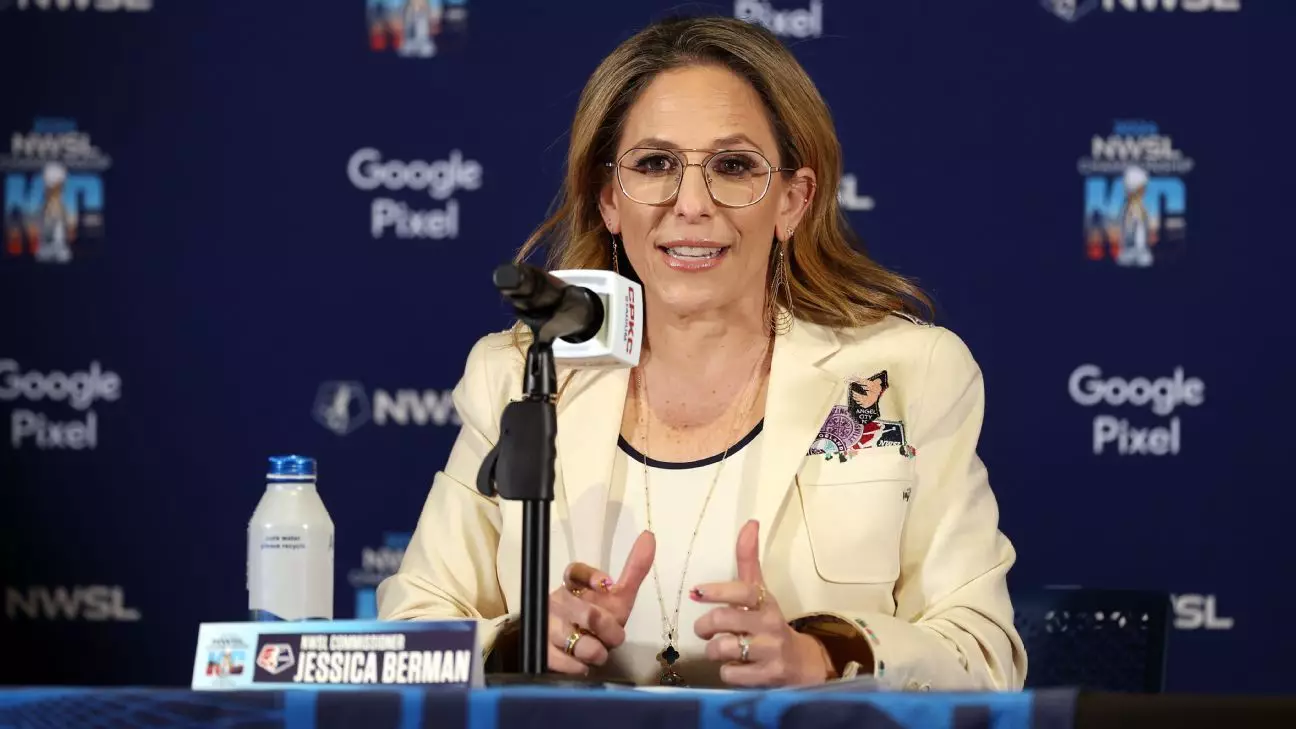The National Women’s Soccer League (NWSL) is poised for significant growth as it prepares to announce its latest expansion franchise, paving the way for an ambitious future. With Denver reportedly set to become the 16th team, NWSL Commissioner Jessica Berman emphasized that this is just the beginning. The league is not merely expanding its number of teams; it is methodically shaping its future landscape by targeting promising markets and ensuring robust ownership structures.
Berman’s statements highlight a broader vision that underscores the importance of not just adding teams but doing so in a calculated manner that secures the league’s long-term viability. The NWSL currently comprises 14 teams, with growth to 16 expected by 2026, as BOS Nation FC has already been confirmed as the 15th franchise. Berman’s commitment to a strategic approach reveals a thorough analysis of both the opportunities and challenges that come with expansion.
The integration of three key factors—ownership, infrastructure, and market potential—into the decision-making process illustrates the league’s keenness to lay a solid foundation. Particularly, the emphasis on securing owners who possess both the financial backing and the vision needed for sustainable investment reflects a matured approach that considers not just immediate gains but the endurance of the teams themselves.
With ownership being a cornerstone of the expansion strategy, it’s crucial for potential franchise owners to show not only a willingness to invest but also an understanding of the marketplace dynamics. The NWSL’s focus on financial viability is particularly pertinent when considering the sustainability of each franchise in the broader ecosystem.
Equally important is the infrastructure—the stadiums and training facilities that must adhere to present-day standards while being adaptable enough to accommodate future developments. In a league where the physical and financial foundations are intertwined, this emphasis signals a shift towards a more professional environment. By prioritizing quality infrastructure, the league aims to enhance the overall spectator experience and ensure that players have the best resources available.
While the league acknowledges the abundant opportunities across various U.S. cities, market potential alone is not the primary criterion for selecting new franchises. This reflects a maturity in the expansion philosophy, allowing NWSL to focus on a balanced approach that evaluates local market conditions alongside ownership and infrastructure needs. Berman pointed out that the NWSL sees the potential for 10 to 12 more markets, which is a promising indicator of the sport’s growing popularity.
However, while the NWSL’s growth is encouraging, it must navigate the challenges inherent in expansion, particularly in cultivating a loyal fan base in new markets. The history of sports leagues reveals that success isn’t guaranteed merely by adding teams; fostering a passion for women’s soccer in new regions will be equally crucial.
As the NWSL progresses towards the groundbreaking 2025 season without a college draft and with free agency on the horizon, the league is entering uncharted territory. Berman notes that this transition poses significant challenges, as teams and players adjust to the changing landscape of player acquisition and retention.
This change, prompted by a comprehensive collective bargaining agreement, has the potential to reshape the league’s competitive dynamics fundamentally. It allows for players to navigate their careers more freely, although it also brings with it an initial period of turbulence as all stakeholders adjust to an environment marked by increased flexibility and new norms.
The league’s foresight in planning an exciting schedule, which includes a Rivalry Weekend and the coveted Decision Day, reflects its commitment to enhancing fan engagement and building a thrilling competitive atmosphere. As the NWSL looks to expand and innovate, the coming months will serve as a litmus test for its strategies and their effectiveness in cultivating interest and securing long-term success.
The NWSL stands on the brink of an exhilarating transformation characterized by thoughtful expansion, renewed player dynamics, and an eye toward the future. As it navigates this path, the combination of strategic planning and a commitment to quality ownership will be essential in maintaining the momentum of women’s soccer and solidifying its place in the sporting world.


Leave a Reply